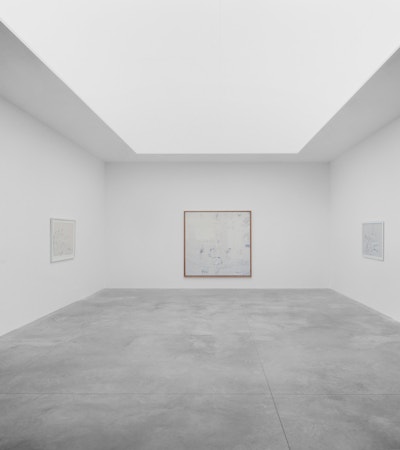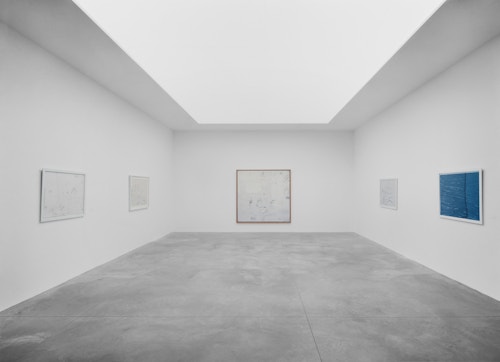
Cy Twombly
“Each line now is the actual experience with its own innate story … it is an involvement in essence … into a synthesis of feeling, intellect etc. Occurring without separation in the impulse of action”.
Cy Twombly was born in Lexington, Virginia, on 25 April 1929, the son of a professional baseball player. He studied at the Boston Museum School of Fine Arts (1948-49), the Arts Students League, New York (1950-51), and at Black Mountain College (1951-52) under Robert Motherwell and Franz Kline. In 1952, having been awarded a Travelling Fellowship from the Virginia Museum of Fine Arts, he spent several months in Spain, North Africa and Italy with his friend Robert Rauschenberg.
Twombly’s first pictures owed their spontaneous, graffiti-like motifs to a study of Paul Klee, to the Surrealist technique of automatic writing and to the calligraphic elements in Abstract Expressionism as developed by Kline and Willem de Kooning.
In 1957, after two years as Head of the Art Department at the Southern Seminary Junior College in Buena Vista, Virginia, Twombly moved to Rome, where he still lives. There he felt in closer contact with the ancient art and mythology which had fascinated him since childhood.
While most American artists of his generation sought their inspiration in contemporary popular culture, Twombly turned to the traditional sources of Western art : Greek and Roman antiquity and the Renaissance. Characters from classical mythology and antique figures and sites (Apollo, Venus, Leda, Ovid, Virgil, Arcadia) became the focus of his abstractions. They were evoked by cryptic scraps of words, pictorial metaphors and allusive signs. With oil paint, pencil and graphite on canvas or paper, Twombly formulated a rich repertoire of marks, scrawls, scribbles, doodles and scratches - at once expressive of a gestural approach and of cultural symbols. These traces hovered between purely formal notations and narrative implications. Inscribed words and phrases stressed the analogies between painting, drawing and writing. Several phrases characterised the growth of this painting/poetry amalgam. In the early 1960’s erotic symbols, whose colours suggest both blood and flesh, emerged in an ambience faintly evocative of architecture and landscape.
The Blackboard paintings (1966 to the early 1970’s) employed chalk and oil paint, and acquired an increasingly lyrical feel as their thin white lines looped and ran across a grey background.
Since his first one-man show, at the Kootz Gallery in New York in 1951, Twombly has exhibited regularly both in America and in Europe. His imagery, linking personal experience to myth and history, found a strong echo in the work of the Italian and German painters who came to prominence in the 1970’s.
